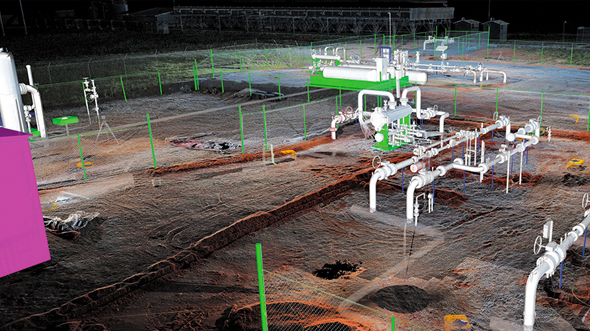
BLOG
—
A Blueprint for Success: 9 Rules for Project Management
Project management is a function across many industries. It is most commonly associated with the construction industry, which can be the most complex to manage. Project management can be defined as meeting the objectives of customers or clients within a given set of constraints. Sometimes this is easily achieved, while other times projects are complicated and present challenging obstacles.
After working on projects of various sizes and scales during my 15 years in the energy industry, many observations and experiences as a project engineer and a project manager have led me to develop the following best practices. My approach for achieving goals and intended outcomes within the usual project management constraints can be boiled down to these nine rules:
9 Rules for Successful Project Management
- Defining scope: A client may reach out directly to you to request a cost for performing a service, or a formal request for proposal (RFP) may be issued. In either case, having a clearly defined work scope is crucial. It is essential not only for accurately pricing out the work, but to get all parties involved on the same page when it comes to goals, objectives and expectations. Clearly defining the scope of work in the beginning can help you avoid talking about the dreaded change order and save a lot of headaches in the future.
- You don’t need a law degree: Once a notice to award a contract has been given, it’s now time to enter into an agreement. Typically, this is headed up by your legal team or an outside counsel, but it is equally important for the project manager to review and understand the terms of the agreement. Some questions project managers need to consider in the current age of risk mitigation: What are the notice requirements? When do invoices need to be submitted? What are the project deliverables and associated due dates? By understanding the agreement and its requirements, a project manager can help a company avoid penalties and eating costs because a notice provision was not understood. This is similar to how your legal team will mitigate a company’s risk when negotiating and entering into an agreement.
- Building your team and resource planning: Every project has a different trigger for when it is time to coordinate available resources needed to meet the objectives of the project. A phone call from a long-standing client may be enough to start that process while you put together a cost proposal, whereas a new client who has issued an RFP to you and five other firms may require a formal award notice to begin coordinating resources. The notice time may not be ideal but building your project team and having as much input into those selections as possible are essential to the success of a project.
- Plan the work, work the plan: Once the agreement is signed, developing a thorough project plan is key. Key features of a good project plan include goals and objectives; a schedule; identifying key players, roles and responsibilities; details on how objectives will be met; and identifying potential risks and mitigations. An outsider with little knowledge of the project should be able to read the plan and understand what the client’s objective is, as well as how your company plans to successfully meet that objective. A project plan may require a lot of time and effort to assemble, but it should not stop there. Making sure the work plan is followed is equally important. Unexpected bumps in the road occur, and when unforeseen things happen, it’s important to revisit and revise the plan.
- Get off on the right foot: Developing the project plan may take a lot of time, but it’s important to communicate the plan to the project team before any work starts. It’s crucial during the project kickoff meeting to summarize the plan and discuss key points to how objectives will be met. Critical elements that everyone involved should understand include the schedule, project deliverables, communication protocols and safety requirements.
- Tracking and trending: Working the plan is key after the project gets underway. Working the plan can mean tracking metrics to ensure goals are being met and tracking costs to ensure budgets are in line. Taking the steps to develop these tracking tools is critical to establishing success. The earlier this can be done, the more you can mitigate any potential risks and stay on the path to success.
- Effective communication is key: Communicating and updating teams on a project’s performance, work scope changes and other key developments are important steps toward meeting objectives. Weekly meetings may not be necessary if they are not a good use of time. A more effective approach may be talking to project leads frequently and having them communicate information back to their teams in small breakout sessions. Don’t just have a meeting because it seems like the right thing to do.
- Don’t be afraid to call a timeout: Sometimes in sports, a team may need to call a timeout to regroup or modify its game plan. The same can be said for project teams. It may be necessary when the client wants to redefine or add to the work scope, or when a few key team members move on to another job midway through a project. During this timeout, key team members need to get together to evaluate and rework the plan as necessary. In the short term, a client may not like this option, but it may be necessary to ensure the long-term success of the project.
- Work is done, but the project isn’t over: Just as it is key to start a project with a kickoff meeting, it is essential to conclude a project with a closeout meeting. This is an opportunity to share project successes, review metrics and milestones, and provide feedback from the client. On a challenging project, the closeout meeting is an opportunity to document the issues and lessons learned. For some projects, this is the most important step in determining how to improve upon and mitigate these risks for future projects.

Doug Garvey, PE
Doug Garvey oversees a large-scale data collection effort on natural gas infrastructure across Ohio and Virginia. A member of the American Society of Civil Engineers, Garvey works out of the firm’s Toledo office. He has spent years managing projects, consultants and contractors in preparation for this blog.
Share this Post

